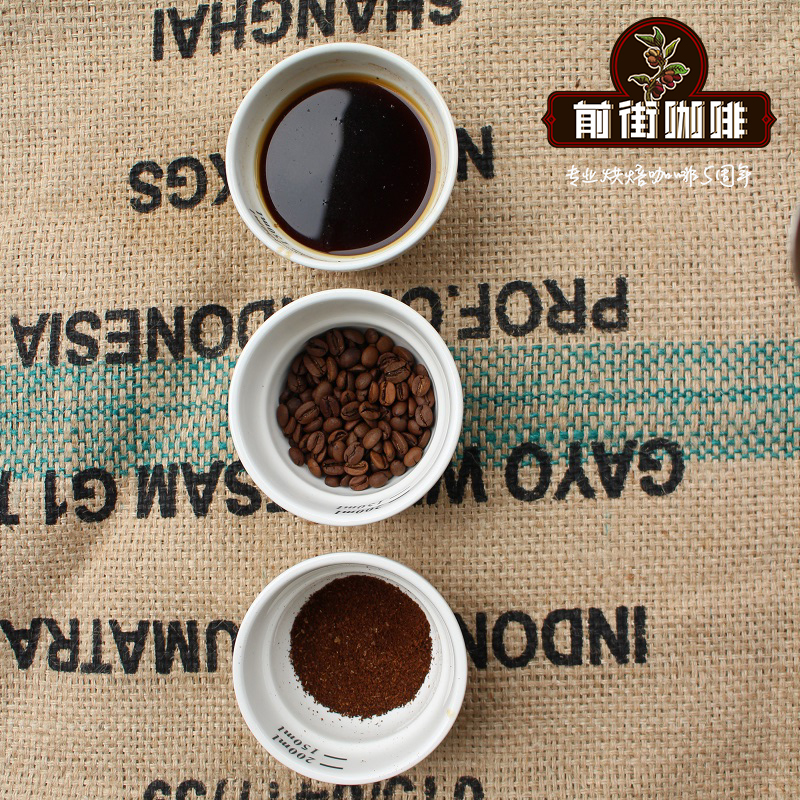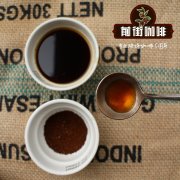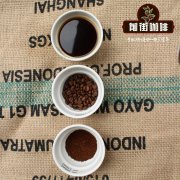Coffee knowledge: how do black coffee antioxidants come from? what's the effect?

Professional coffee knowledge exchange more coffee bean information please follow the coffee workshop (Wechat official account cafe_style)
Coffee is the most complex food in the known natural substances. Scientists have isolated more than 300 chemicals from raw coffee beans and more than 800 kinds of cooked beans, including many acidic organic compounds, which are not only the source of the sour flavor of caffeine. It is also a healthy antioxidant.
Among them, the content of chlorogenic acid (chlorogenic acids) is the most abundant. Chlorogenic acid is not pleasing to the taste buds, but it has a strong ability of anti-oxidation and scavenging free radicals, which has been found to help the human body fight cancer. After baking, chlorogenic acid is decomposed into quinic acid (quinic acid) and caffeic acid, which also has antioxidant effect.
Coffee addicts agree that the most fragrant moment of ─ coffee is not when you drink it, but when you grind the beans and just cook them. The fragrance in the room makes people feel happy. This is the role of volatile antioxidants. The finer the ground beans and the more particles, the larger the total area of contact with the air, and the antioxidants will easily evaporate.
"only water-soluble antioxidants can be absorbed by the human body, and the finer the grinding, the higher the extraction rate, and the easier it is to dissolve organic acids and phenolic antioxidants," he suggests.
The relationship between grinding fineness and acid aroma extraction concentration. Take chlorogenic acid as an example, under rough grinding, coffee beans can extract 700mg chlorogenic acid per liter, if fine grinding can increase the dissolution to 1065 mg per liter, if ultra-fine grinding coffee beans, chlorogenic acid can be as high as 1177 mg / liter, 70% more than coarse particles.
Different coffee machines should use different grinding degrees.
Although theoretically, the finer the coffee beans are ground, the easier the antioxidants will dissolve, but in practice, it is still necessary to consider the way of brewing coffee and the length of brewing time to adjust a more suitable degree of grinding.
If the grinding is too fine, the water and the coffee powder surface contact too much, easy to extract too many impurities and bitter taste, but if the grinding is too rough, gouache contact is not enough, you will not be able to brew the aroma of coffee.
Therefore, generally speaking, the powder particles from fine to coarse, corresponding to the appropriate coffee machine can be divided into several types:
● espresso grinding (espresso grind): very fine particles, suitable for espresso machine.
● fine grinding (fine drind): suitable for mocha pot and hand dripping filter cup.
● grinding (medium grind): suitable for manual drip filter cup, American coffee pot, siphon pot.
● rough grinding (coarse grind): suitable for French filter kettle.
As for when to grind coffee to preserve the most complete nutrients? Chang Wen-Wei, director of the Taipei boutique Coffee Association and head of the Coffee consciousness Cafe, points out that if time permits, "grinding and cooking now" is the best, because once coffee beans are ground, the rate of oxidation and deterioration of coffee beans is accelerated, not only the antioxidants are decreasing, but also the flavor is getting worse.
Important Notice :
前街咖啡 FrontStreet Coffee has moved to new addredd:
FrontStreet Coffee Address: 315,Donghua East Road,GuangZhou
Tel:020 38364473
- Prev

Coffee knowledge: what are the temperature and humidity requirements for coffee storage?
Professional coffee knowledge exchange more coffee bean information Please pay attention to the coffee workshop (Wechat official account cafe_style) there are four major factors that affect the freshness of coffee beans, namely, light, oxygen, temperature and humidity. Therefore, all the preservation methods mentioned below revolve around these four aspects. Temperature, humidity, oxidation rate, temperature when coffee beans encounter sunlight
- Next

Suggestions and parameters on how to cook coffee beans in Lindong Mantenin, Indonesia
Professional coffee knowledge exchange more coffee bean information please follow the coffee workshop (Wechat official account cafe_style) 1. Selection of appliances: Hario V602. The temperature of the water: 88 degrees. The thickness of powder: the grinding degree of small Fuji is 44. Baking depth: medium and deep baking 5. Length of steaming time: 25 seconds specific technique: [water cut off three times] hand flush Manning, 15g powder, little Fuji ghost teeth
Related
- What documents do you need to go through to open a coffee shop? coffee shop coffee shop certificate processing process
- How to purchase Coffee beans in small Cafe how to choose a suitable supplier for domestic Coffee supply Company
- How to drink Starbucks Fragrance White Coffee? how to make Australian White Coffee? what Italian coffee beans are recommended?
- The Story of Flora Coffee: the name of Flora Coffee Bean and the implication of the Flowers on Florna Coffee
- How much does a cup of coffee cost? How much is the profit of a cup of coffee? What is the profit of the coffee shop in a year?
- Yunnan small Coffee, known as "fragrant Coffee", introduces the characteristics of Alpine Arabica Coffee producing areas in Yunnan, China
- 2023 latest Starbucks full menu price list how much is a cup of Starbucks coffee what is better to drink the most popular hot and cold drinks recommended
- Starbucks different kinds of Coffee Price list Starbucks menu 2023 Top Ten Best drinks in Starbucks
- Starbucks Spring praise Comprehensive matching Coffee Bean theme Story Packaging implication and taste description
- The cost of a cup of coffee latte American coffee cost price and selling price

